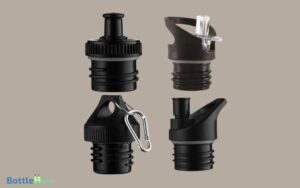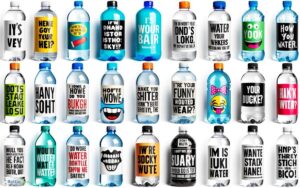Can You Bring Water Bottle Into Movie Theater? Yes!
Most movie theaters don’t allow you to bring in a water bottle. Signs or staff usually inform you about these regulations, and bag checks are common to guarantee compliance.
Major chains like AMC and Regal generally restrict outside beverages, but some, like Cinemark, might allow unopened water bottles. Independent theaters can be more flexible, so checking their specific policies is a good idea.
Exceptions exist for medical needs or baby formula. Understanding the reasons for these rules and exploring tips on staying hydrated at theaters can offer more insights into what to expect during your movie experience.

Key Takeaways
Common Theater Policies
Most movie theaters have strict policies against bringing outside food and beverages, including water bottles.
You’ll often see signs posted at entrances or be informed by staff directly. These regulations are typically enforced to maintain control over the items entering the theater.
When you arrive, theaters might check bags to guarantee compliance. If they find any outside food or drinks, you’ll likely be asked to leave them behind or dispose of them.
Some theaters may allow an exception for medical needs or baby formula, but it’s best to check their specific policies beforehand.
Understanding these common rules helps you avoid any inconvenience and guarantees a smoother experience at the theater. Always check individual theater guidelines for the most accurate information.
Reasons for Restrictions
You might wonder why theaters restrict outside water bottles. The primary reasons include protecting revenue from concession sales and addressing security and safety concerns.
Examining these factors will help you understand the theater’s perspective on this policy.
Revenue and Concession Sales
Movie theaters often restrict outside food and beverages to maximize revenue from concession sales, which are an important part of their income.
When you buy snacks and drinks at the theater, you’re helping them cover operational costs, like staff salaries and maintenance.
Ticket sales alone often don’t generate enough profit, especially with the high cost of film distribution and exhibition.
Concessions are marked up considerably, creating a crucial revenue stream that supports the theater’s overall financial health.
Security and Safety Concerns
Theater restrictions on outside food and drinks often stem from security and safety concerns. You mightn’t realize it, but allowing unchecked items into a theater can pose risks.
Containers brought from outside can conceal hazardous substances or alcohol, leading to potentially dangerous situations.
Additionally, glass bottles and other hard containers can break, creating safety hazards for patrons. Theaters aim to guarantee a safe environment, free from unforeseen threats.
By controlling what enters the premises, they can better manage crowd safety and prevent incidents.
While it may seem inconvenient, these measures are in place to protect everyone and maintain a secure, enjoyable experience for all moviegoers. Understanding these reasons can help you appreciate the precautions in place.
Major Cinema Chains
When it comes to major cinema chains, you’ll find variations in their policies on bringing outside water bottles.
Some chains strictly enforce bans, while others might allow exceptions under certain conditions. Understanding these differences can help you navigate the rules more effectively.
Chain-Specific Policy Variations
Ever wonder how the policies on bringing a water bottle into a movie theater differ across major cinema chains? You’ll find that each chain has its own specific rules.
- AMC Theatres typically don’t allow outside food or beverages, including water bottles.
- Regal Cinemas enforces a similar policy, discouraging any outside drinks.
- Cinemark, however, may permit water bottles, especially if they’re unopened.
- Alamo Drafthouse has a more relaxed approach, often allowing outside water bottles as long as they’re not disruptive.
- It’s important to check each theater’s guidelines before visiting, as policies can change.
Understanding these variations helps you avoid surprises and guarantees a smooth movie-going experience.
Always consult the specific chain’s website or call ahead to confirm.
Enforcement and Exceptions
Cinema staff often enforce policies on outside beverages rigorously, but exceptions can sometimes be made for medical or dietary needs. It’s vital to understand how different major cinema chains handle enforcement and exceptions.
While some theaters may strictly prohibit outside drinks, others may be more lenient under specific circumstances.
For instance, if you have a medical condition that requires constant hydration, some theaters might allow you to bring a water bottle.
The table below outlines how various cinema chains approach these policies:
| Cinema Chain | Policy on Outside Beverages |
|---|---|
| AMC | Generally strict, exceptions for medical needs |
| Regal | Strict, few exceptions |
| Cinemark | Moderate, case-by-case basis |
| Alamo Drafthouse | Strict, no exceptions |
| Marcus Theatres | Strict, exceptions for dietary needs |
Understanding these policies helps you navigate what to expect.
Independent Theaters
Independent theaters often have more flexible policies regarding bringing in outside food and drinks, including water bottles.
These theaters typically prioritize customer experience and may not strictly enforce rules about outside items.
You’ll find that independent theaters often focus more on community engagement and unique programming, which can lead to a more relaxed atmosphere overall.
It’s still a good idea to check their specific policies beforehand, as they can vary. Some independent theaters might allow water bottles but restrict other outside food and beverages.
You can usually find this information on their website or by calling ahead. Being mindful of their guidelines ensures you’ll have a smooth experience without any surprises. Always respect the theater’s rules to support their operations.
Health and Safety
While independent theaters might offer more flexibility, it’s important to consider health and safety regulations when bringing a water bottle into any movie theater. Regulations are in place to guarantee a safe and enjoyable experience for everyone.
Cleanliness and contamination are primary concerns. Sealed bottles are generally preferred to reduce the risk of spills and contamination.
Additionally, some theaters may have specific guidelines due to recent health events.
| Health Concern | Reason |
|---|---|
| Spills | Slip hazards and sticky residues |
| Contamination | Prevents spread of germs and viruses |
| Allergies | Reduces exposure to allergens |
| Cleanliness | Maintains a hygienic environment |
| Compliance | Adheres to local health regulations |
Understanding these guidelines helps you make informed decisions and respect the theater’s policies.
Environmental Impact
By bringing a reusable water bottle into a movie theater, you can greatly reduce plastic waste. This simple change promotes the use of sustainable options and helps lower your carbon footprint.
Consider the impact your choices have on the environment and make more eco-friendly decisions.
Reduce Plastic Waste
Bringing a reusable water bottle into a movie theater can greatly reduce the amount of plastic waste generated by single-use bottles.
The average person uses about 13 plastic bottles per month, contributing considerably to environmental pollution.
By opting for a reusable bottle, you’re directly minimizing the demand for plastic production, which involves energy-intensive processes and harmful emissions.
Additionally, less plastic waste means fewer items end up in landfills and oceans, protecting wildlife and ecosystems.
Movie theaters can accumulate a considerable amount of waste, so your choice to bring a reusable bottle can make a meaningful impact.
It’s a simple yet effective way to contribute to environmental sustainability while enjoying your movie experience.
Promote Reusable Options
Encouraging the use of reusable water bottles can greatly reduce the environmental footprint associated with single-use plastics in movie theaters.
By opting for a reusable bottle, you minimize the waste generated from disposable plastic bottles, which often end up in landfills or oceans.
This small change can have a significant impact considering the high volume of patrons in theaters. It’s not just about reducing waste; reusable bottles can also promote a culture of sustainability among moviegoers.
Many theaters are starting to recognize this and may offer water refill stations, making it convenient for you.
When you choose a reusable option, you contribute to a broader effort to combat plastic pollution, making entertainment venues more eco-friendly.
Lower Carbon Footprint
Finally, choosing a reusable water bottle at the movie theater substantially decreases your carbon footprint by reducing the production and disposal of single-use plastics.
Single-use plastics require significant energy and resources to produce and often end up in landfills, contributing to pollution.
By bringing your own bottle, you cut down on this waste cycle. Additionally, manufacturing reusable bottles generally has a lower overall environmental impact compared to the continuous production of disposable ones. You’ll also save water and energy used in plastic production processes.
In addition, reusable bottles tend to be made from more sustainable materials like stainless steel or BPA-free plastics, further minimizing their ecological footprint. Making this small change contributes to a larger, positive environmental impact.
Cost Considerations
Opting to bring your own water bottle into a movie theater can greatly reduce your overall expenses. Concession stands often mark up prices considerably compared to retail.
A bottle of water bought at the theater can cost $4 or more, while bringing your own reusable bottle filled at home is virtually free after the initial purchase.
| Item | Theater Price | Home Price |
|---|---|---|
| Water Bottle | $4 | $0.10 |
| Large Popcorn | $8 | $1.50 |
| Candy Bar | $3 | $0.75 |
Special Circumstances
In certain situations, bringing a water bottle into a movie theater isn’t just a matter of cost but also necessity.
For instance, if you have a medical condition that requires constant hydration, carrying your own water becomes essential.
Parents with young children might also need to bring water to make certain their kids stay hydrated during the movie.
Additionally, if you adhere to a specific dietary or health regimen that mandates a particular type of water, you might need to bring your own.
Most theaters have policies that can accommodate these special circumstances, often requiring you to inform staff or provide documentation.
Understanding these exceptions helps you navigate theater rules while addressing your individual needs.
Tips for Hydration
Guaranteeing you stay hydrated during a movie without breaking theater rules can be straightforward with a few practical tips.
Here’s how you can manage it effectively:
- Drink Beforehand: Make sure to consume plenty of water before arriving at the theater. This helps you stay hydrated throughout the film.
- Timing Your Drinks: If you have a long movie ahead, try to take sips at regular intervals before the show starts. This way, you won’t feel parched midway.
- Use the Concession Stand: Most theaters offer beverages at their concession stands. Opt for a large water or a hydrating drink available there.
These strategies ensure you stay hydrated without violating theater policies.
Alternatives to Bottled Water
Consider bringing a reusable water bottle to the theater as a sustainable alternative. Reusable bottles reduce plastic waste and often save you money in the long run.
Stainless steel or BPA-free plastic bottles are both good options, offering durability and safety. Some theaters may have water fountains or refill stations, making it convenient to top up your bottle.
If you prefer not to bring a bottle, consider hydration packs or collapsible water containers. These alternatives are compact and easy to carry. Many of them are designed to fit in small bags, making them convenient for movie outings.
Audience Experiences
Moviegoers often share diverse experiences when bringing a water bottle into the theater, ranging from seamless hydration to occasional challenges with theater policies.
Some theaters are lenient and allow outside beverages, while others strictly enforce their no-outside-food-or-drink rules.
Here are some common audience experiences:
- Convenience: Bringing your own water can be cost-effective and guarantees you stay hydrated without leaving your seat.
- Policy Adherence: Some theaters may ask you to leave your water bottle at the entrance or discard it, leading to frustration.
- Discretion: Many patrons choose to discreetly bring water bottles, sometimes hiding them in bags to avoid confrontation.
Understanding these experiences can help you navigate theater policies more smoothly and enhance your movie-going experience.
Changing Trends
In recent years, many theaters have started to relax their policies on outside beverages, reflecting a shift in consumer expectations and competitive pressures.
You might notice signs indicating more lenient rules or hear staff members offering clearer guidelines.
This change aims to enhance your viewing experience and acknowledge the growing demand for flexibility.
Theaters face intense competition from streaming services, making it vital to attract and retain patrons.
Allowing water bottles is a small yet important gesture that caters to health-conscious and budget-minded individuals. While some theaters still maintain strict rules, the trend is moving towards greater acceptance.
Always check your local theater’s policy to avoid any surprises, but don’t be shocked if they welcome your water bottle.
Conclusion
To sum up, whether you can bring a water bottle into a movie theater largely depends on the specific policies of each venue. Major cinema chains often have stricter rules compared to independent theaters. Some theaters may allow sealed water bottles, while others prohibit outside drinks entirely. If you’re unsure, it’s always best to check the theater’s website or call ahead to confirm their policy. For instance, if you’re wondering, can you bring water to Universal movie theaters, reviewing their guidelines beforehand can help avoid any surprises.
While restrictions are typically in place for health, safety, and profit reasons, there are ways to stay hydrated without breaking the rules.
As trends evolve and audience preferences shift, you might just find that theaters start to bend their policies like a reed in the wind.






